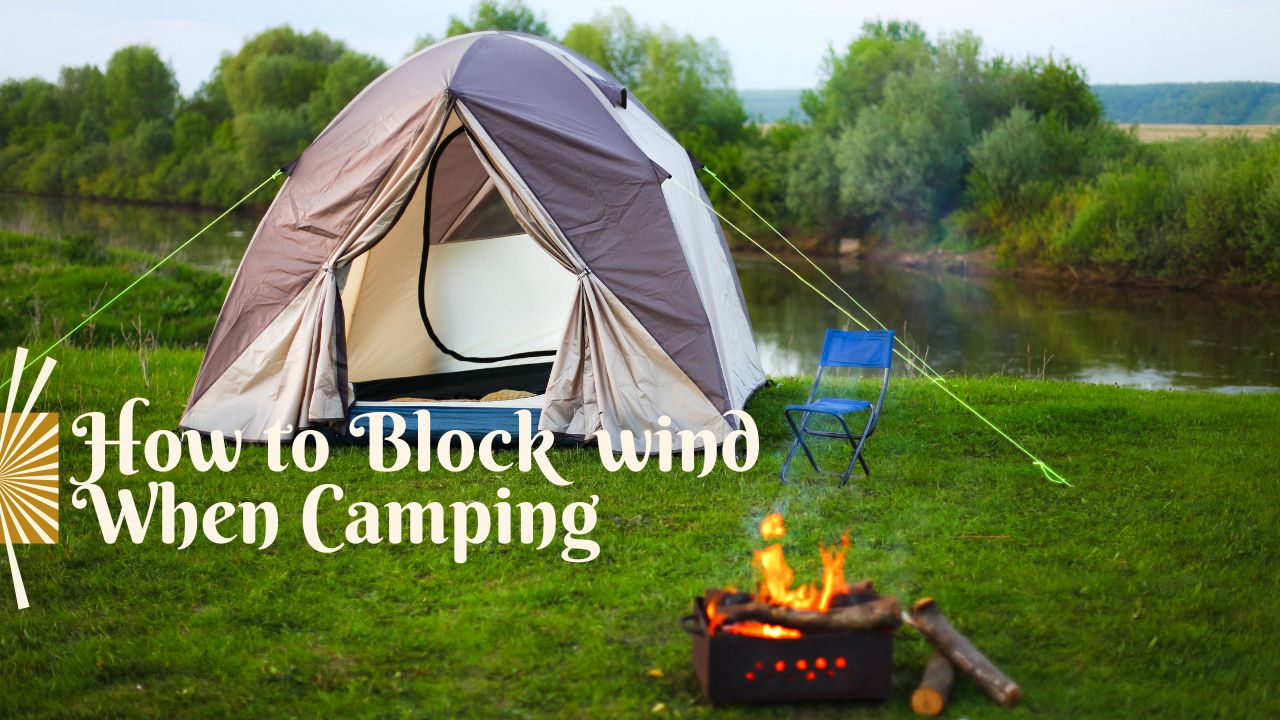No matter where you camp, you’re likely to experience some wind. And while a little breeze can be refreshing, too much wind can make for an uncomfortable experience. If you’re not prepared, it can even ruin your trip.
This guide will show you how to block wind when camping. We will cover how to use different materials to create a barrier from the wind as well as how to position your campsite to make the most of natural windbreaks.
Blocking the wind can make a huge difference to your camping experience. It can help you stay warm, keep your tent in one piece, and stop your supplies from blowing away.
When going for long hikes and camping always remember to use Merino Wool Clothing during the hike.
So, if you’re looking for ways to make your campsite more comfortable, this guide is for you.
Why Should You Block Wind When Camping?
When it comes to camping, it’s essential to be prepared for all the elements. One element that can make or break your camping trip is the wind. Wind can make it difficult to stay warm, set up your tent, and cook food.

Blocking wind when camping is one of the most important things you can do to ensure a comfortable and successful trip. You can do this in a variety of ways. One way is to use an enclosed shelter.
The shelter’s walls will block the wind and help keep you warm. You can also use tarps and blankets to create a wind block. They can be hung from trees or stakes to create a makeshift wall that will protect you from the wind.
How Can You Block the Wind When Camping?
Camping is a great way to get close to nature, but sometimes it can be too close for comfort. The wind can take the fun out of camping and make it miserable, but there are ways to keep it at bay. Here are some tips on how to block the wind when camping.

When selecting a campsite, look for a spot sheltered from the wind. Woods and hills can help block wind, as can large boulders and trees. If possible, try to pick a spot that’s out of the direct path of the wind. It’s generally recommended that you avoid wide-open spaces if possible.
Using a tent is the first and most obvious way to block the wind when camping. Tents provide a wind-proof shelter for you and your camping gear, and there are plenty of choices for all weather conditions. Look for tents with sturdy poles and waterproof fabric and be sure to set them up securely.
Another option is to create a windbreak. If you’re camping in an open area, you can use branches, rocks, or any other natural objects to create a barrier between you and the wind. Just make sure the objects are sturdy enough to withstand wind gusts.
Finally, you can also use tarps or blankets to block the wind. Tarps are great because they’re lightweight, waterproof, and easy to move around. If camping in a more sheltered area, you can use blankets to block the wind.
It’s important to be cautious of chiggers when camping. Chiggers can cling to your clothing and potentially cause discomfort.
Another issue is how to stop tent flapping in wind. Take some large tents or plastic sheets and set up a makeshift windbreak. You can use sticks or rocks to hold the tarp in place and block the wind.
As a temporary windbreak, You can use sticks or rocks to hold the tarp in place and block the wind. Using these methods, you’ll enjoy camping without being blown away by the wind.
Just remember to keep an eye on the weather so you can know when to take shelter and take advantage of the wind. With the proper preparation, you can ensure that your camping experience is comfortable and fun.
How to Build an Emergency Windbreak While Camping
When camping, there are many elements you have to be aware of to ensure a safe and enjoyable experience. One of those elements is wind.
If you don’t take the necessary precautions to protect yourself and your campsite, the wind can quickly turn a pleasant camping trip into a miserable experience.
Fortunately, you can quickly build an emergency windbreak while camping to help protect you and your campsite from gusts of wind.
Here are simple tips on How to Camp Safely in High Winds.
1. Choose a suitable location. When choosing a location to build your windbreak, try to find a spot sheltered from the wind. If you can find a spot with trees, shrubs, other natural barriers, or rocks, that’s even better.
2. Gather materials. You’ll need sturdy materials to create a windbreak. Look for trees, branches, rocks, and even roofing sheets.
3. Build the windbreak. Once you’ve gathered your materials, you can begin building your windbreak. The most common way to do this is by creating a series of walls or barriers that block the wind.
If you’re using logs and branches, place them as close together as possible and then tie them together with rope or string. This will be the base of your windbreak.
If you’re using rocks, arrange them in half circles around your campsite to create a windbreak. Place the stones as close together as possible.
And if you’re using a tarp, tie it to nearby trees or rocks to create a temporary wall. It is essential to ensure you don’t have any dead branches over the spot you have chosen to shelter in. It may be possible for these to fall due to strong winds.
4. Establish the windbreak. Once you’ve built your windbreak, make sure to secure it to the ground. Use stakes, ropes, or sandbags to ensure the windbreak stays in place.
By following these simple steps, you can quickly build an emergency windbreak while camping. This will help protect you and your campsite from strong winds and ensure an enjoyable and safe camping experience.
Summary: how to stop tent flapping in wind?
Camping is a great way to escape the everyday hustle and bustle. Fortunately, there are several ways how to stop tent flapping in wind. This ultimate guide provides tips and tricks to protect yourself and your campsite from the wind. From setting up your tent in the right spot to using windbreaks and tarps.
You can rest assured that you and your campsite will be safe and sound, no matter the wind direction. With these strategies, you’ll be able to enjoy a peaceful camping trip and make the most of your outdoor adventure.
FAQs
Will a Tent Survive 50 Mph Winds?
It depends on the type of tent. Some tents are designed for high winds, while others are not. Most tents can withstand winds up to 20 mph. It becomes 40 miles per hour if stakes are used. Most tents aren’t designed to handle winds over 50 mph.
Is It Safe to Camp in High Winds?
No, camping in high winds is not safe. Strong winds can blow over tents, break branches, and cause other hazards. If camping in a tent, it is essential to ensure that your tent is anchored correctly and that you are not in an area with a risk.
What Wind Speed is Too High for Camping?
Wind speeds over 30 mph can be dangerous for camping, as they can easily cause tents and other equipment to blow away.









Laissez un commentaire